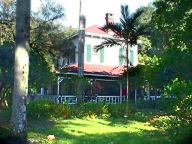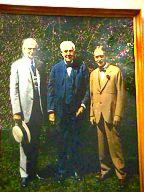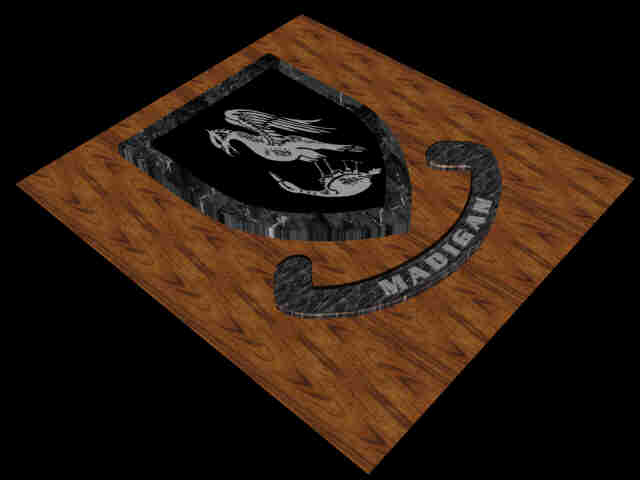The
Edison-Ford Winter Estates
Fort Myers,
FL
January 02, 2002
As we travel, looking for
the stories that make this country the great place that it is, we
sometime come across an additional chapter to a story we had
previously written. Such was the case with the great Indian Chief
Sitting Bull which we followed in additional stories from the
Little Big Horn, to his stay in Canada, then again for his days
riding in a Wild West Show with Buffalo Bill Cody. Now again, we
had an opportunity to continue the story of a famous American. We
first wrote about Thomas Edison as a boy in Port Huron, MI., when
he worked on a train selling papers and experimenting with
things. We later found a place where he had stayed in Canada. Now
we had arrived at the summer home he used in his later years.
Thomas Edison's relationship with Fort Myers, FL., began in 1885
when
looking for
the stories that make this country the great place that it is, we
sometime come across an additional chapter to a story we had
previously written. Such was the case with the great Indian Chief
Sitting Bull which we followed in additional stories from the
Little Big Horn, to his stay in Canada, then again for his days
riding in a Wild West Show with Buffalo Bill Cody. Now again, we
had an opportunity to continue the story of a famous American. We
first wrote about Thomas Edison as a boy in Port Huron, MI., when
he worked on a train selling papers and experimenting with
things. We later found a place where he had stayed in Canada. Now
we had arrived at the summer home he used in his later years.
Thomas Edison's relationship with Fort Myers, FL., began in 1885
when  he
and his business partner Ezra Gilliland arrived in town. The next
day, they both decided to purchase land and chose property
adjacent to the Caloosahatchee River. They constructed two
identical homes and Edison installed a small electrical
laboratory. The following year Edison brought his new bride, Mina
Miller Edison to the town for their honeymoon.
he
and his business partner Ezra Gilliland arrived in town. The next
day, they both decided to purchase land and chose property
adjacent to the Caloosahatchee River. They constructed two
identical homes and Edison installed a small electrical
laboratory. The following year Edison brought his new bride, Mina
Miller Edison to the town for their honeymoon.  Three days
later they moved into the completed summer home they now called
the Seminole Lodge. Unfortunately troubles developed between
Edison and Gilliland and Edison stayed away the next winter. In
1896, his path would cross yet another famous American. At a
convention of the Association of Edison Illuminating companies, a
young aggressive inventor named Henry Ford so impressed
Three days
later they moved into the completed summer home they now called
the Seminole Lodge. Unfortunately troubles developed between
Edison and Gilliland and Edison stayed away the next winter. In
1896, his path would cross yet another famous American. At a
convention of the Association of Edison Illuminating companies, a
young aggressive inventor named Henry Ford so impressed Edison
with his newly designed gas powered horseless carriage that
they quickly became good friends. Edison returned to Florida,
having broken his relationship with Gilliland, was able to
purchase the Gilliland house in 1906. He converted it into a
guest house. Although best known for his work in electricity,
Edison was also an accomplished botanist. In 1907 he offered to
plant Royal Palm trees along Riverside Avenue. Fort Myers gladly
accepted. In 1914, another life long friend joined the Edisons.
Well known naturalist John Burroughs became a regular fixture at
the winter home. That same year, the Ford family arrived and
along with Burroughs, the two took extended camping trips into
the Everglades. By 1916, Ford arranged to purchase a home
adjacent to the Edison's which he called Mangoes.
Edison
with his newly designed gas powered horseless carriage that
they quickly became good friends. Edison returned to Florida,
having broken his relationship with Gilliland, was able to
purchase the Gilliland house in 1906. He converted it into a
guest house. Although best known for his work in electricity,
Edison was also an accomplished botanist. In 1907 he offered to
plant Royal Palm trees along Riverside Avenue. Fort Myers gladly
accepted. In 1914, another life long friend joined the Edisons.
Well known naturalist John Burroughs became a regular fixture at
the winter home. That same year, the Ford family arrived and
along with Burroughs, the two took extended camping trips into
the Everglades. By 1916, Ford arranged to purchase a home
adjacent to the Edison's which he called Mangoes.
